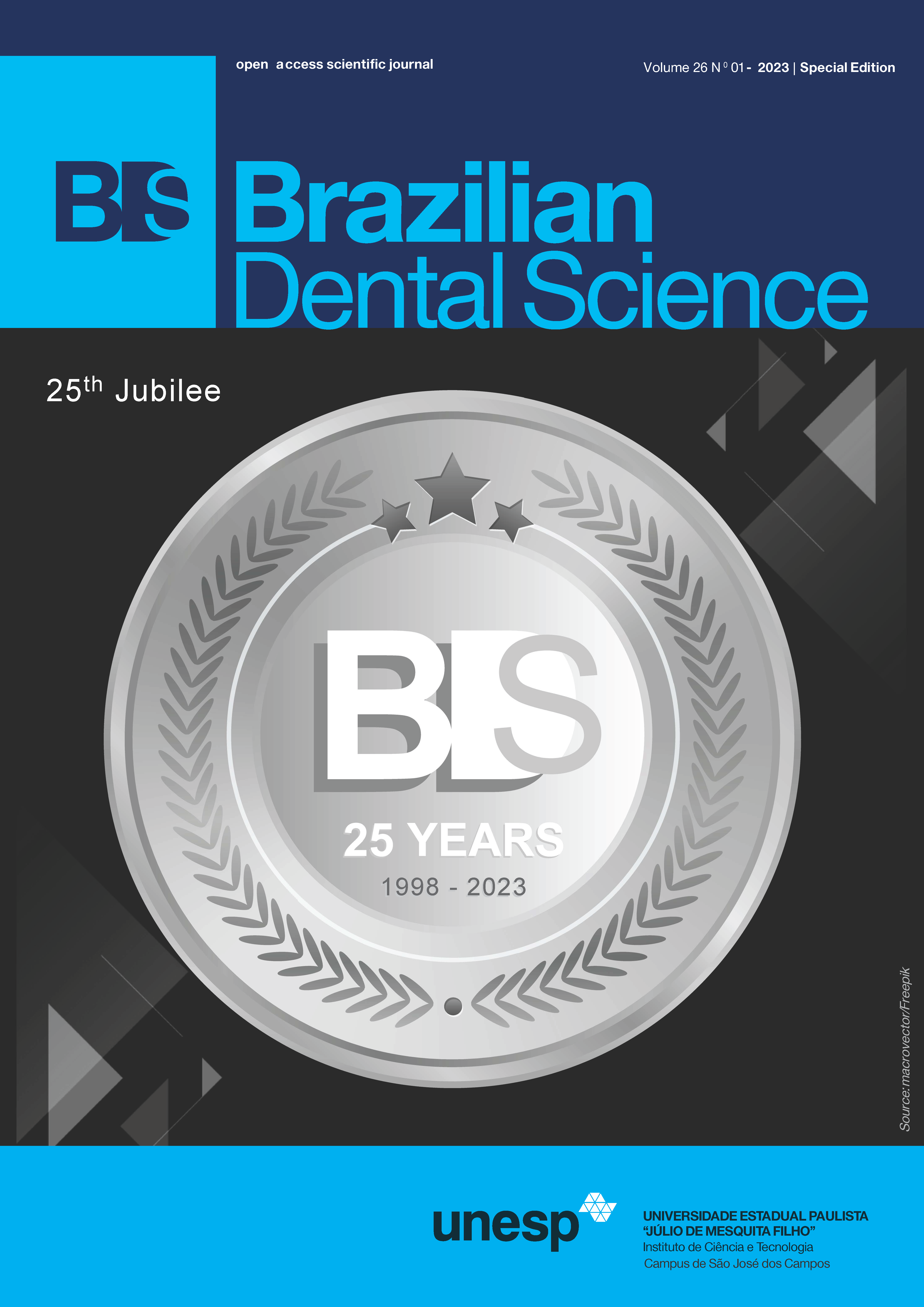A radiation free alternative to CBCT volumetric rendering for soft tissue evaluation
DOI:
https://doi.org/10.4322/bds.2023.e3726Abstract
Objective: The aim of the present study is to evaluate whether a “radiation free” method using 3D facial scan can replace Cone Beam Computed Tomography (CBCT) volumetric rendering of soft tissue of the patient to assess maxillofacial surgery outcomes and compare the reference points and angular measurements of patient facial soft tissue. Material and Methods: Facial soft tissue scan of the patient’s face, before and after orthognathic surgery and a CBCT of the skull for volumetric rendering of soft tissues were carried out. The 3D acquisitions were processed using Planmeca ProMax 3D ProFace® software (Planmeca USA, Inc.; Roselle, Illinois, USA). The participant were positioned in a natural position during the skull scannering. Three sagittal angular measurements were performed (Tr-NA, Tr-N-Pg, Ss-N-Pg) and two verticals (Go-N-Me, Tr-Or-Pg) on facial soft tissue scan and on the patient’s 3D soft tissue CBCT volumetric rendering. Results: A certain correspondence has been demonstrated between the measurements obtained on the Proface and those on the CBCT. Conclusion: A radiation free method was to be considered an important diagnostic tool that works in conditions of not subjecting the patient to harmful ionizing radiation and it was therefore particularly suitable for growing subjects. The soft tissue analysis based on the realistic facial scan has shown sufficient reliability and reproducibility even if further studies are needed to confirm the research result.
Keywords
CBCT; Ionizing radiation; Soft tissue; Orthodontics; Diagnosis.
Downloads
Published
How to Cite
Issue
Section
License
Brazilian Dental Science uses the Creative Commons (CC-BY 4.0) license, thus preserving the integrity of articles in an open access environment. The journal allows the author to retain publishing rights without restrictions.
=================




























